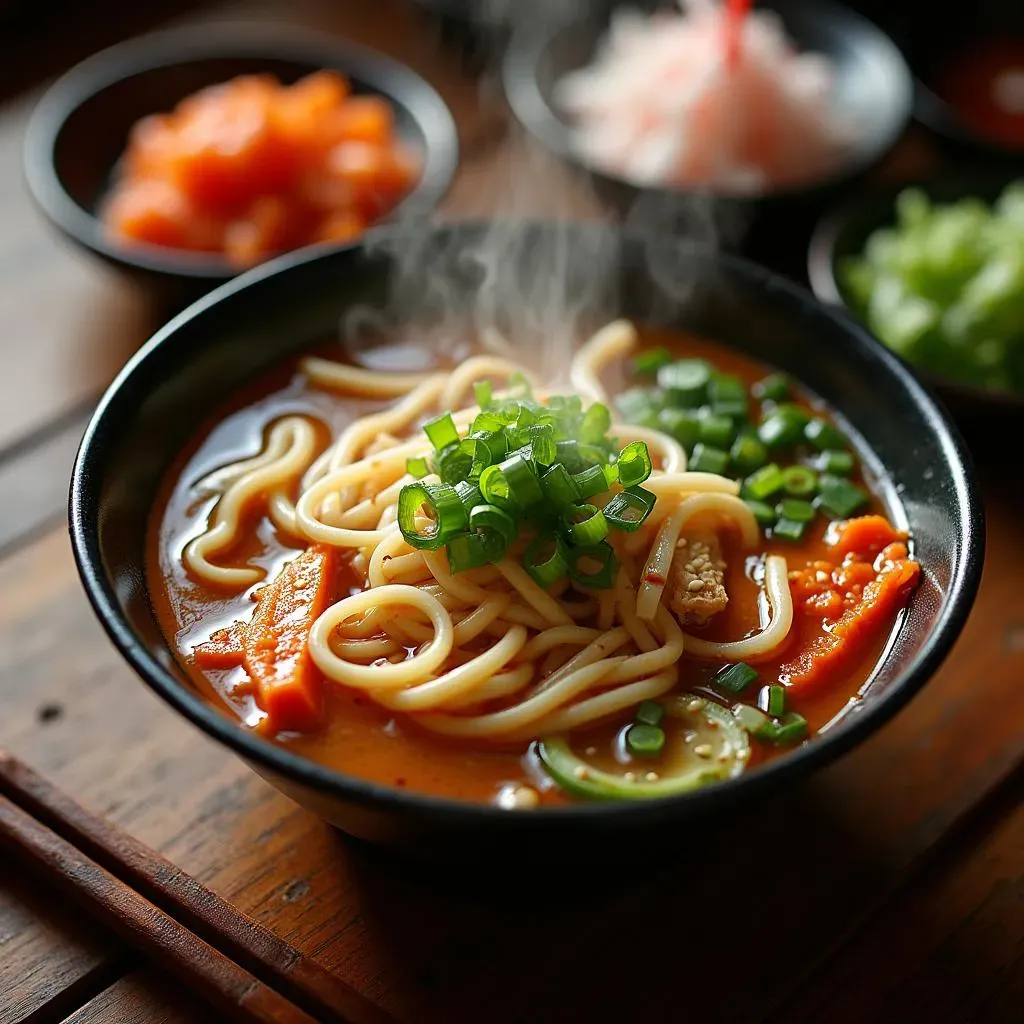Table of Contents
Craving a bowl of comfort that warms you from the inside out? Look no further than Dak Kalguksu, a beloved Korean dish that translates to "chicken knife-cut noodle soup." This isn't just any chicken noodle soup; it's a hearty, flavorful experience that combines tender chicken, chewy knife-cut noodles, and a deeply satisfying broth. In this article, we'll dive into the secrets of creating the perfect korean chicken noodle soup recipe, exploring its cultural significance and offering a unique twist on the traditional preparation.
What is Dak Kalguksu? Exploring Korean Chicken Noodle Soup
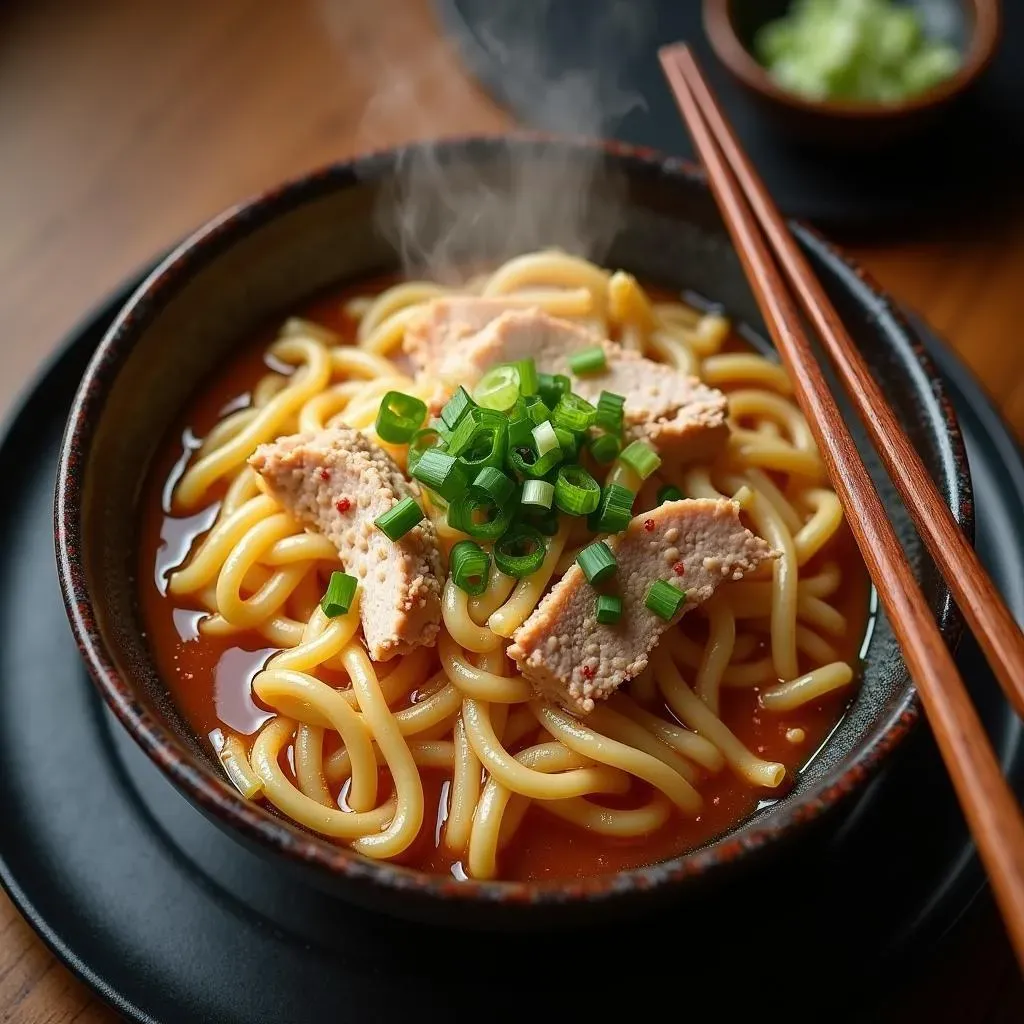
What is Dak Kalguksu? Exploring Korean Chicken Noodle Soup
A Comforting Classic
Dak Kalguksu (닭칼국수) is more than just a soup; it's a hug in a bowl. Literally translating to "chicken knife-cut noodle soup," it's a traditional Korean dish featuring tender chicken simmered in a rich, flavorful broth, served with chewy, handmade-style noodles. Think of it as Korea's answer to chicken noodle soup, but with a unique depth of flavor and satisfying texture that sets it apart.
The Cultural Significance
In Korean culture, Dak Kalguksu is considered a comforting and restorative dish, often enjoyed during colder months or when feeling under the weather. It's also sometimes eaten as a "stamina food" during the hot summer months, based on the principle of "fighting heat with heat" (이열치열). This belief suggests that consuming hot foods in the summer can help the body regulate its temperature and boost energy levels. Beyond its culinary appeal, Dak Kalguksu holds a special place in the hearts of many Koreans, evoking memories of home-cooked meals and family gatherings.
Dak Kalguksu vs. Other Kalguksu
While Dak Kalguksu focuses on chicken broth, other variations of Kalguksu exist, each with its own distinct flavor profile. Traditional Kalguksu often uses an anchovy and kelp-based broth, offering a lighter, more seafood-forward taste. There's also Baechu Kalguksu (with cabbage) and even versions with seafood like clams or shrimp. My personal upgraded version combines the richness of chicken broth with the refreshing taste of dried anchovies and little neck clams, creating a truly unique and unforgettable flavor.
Crafting the Perfect Korean Chicken Noodle Soup Broth
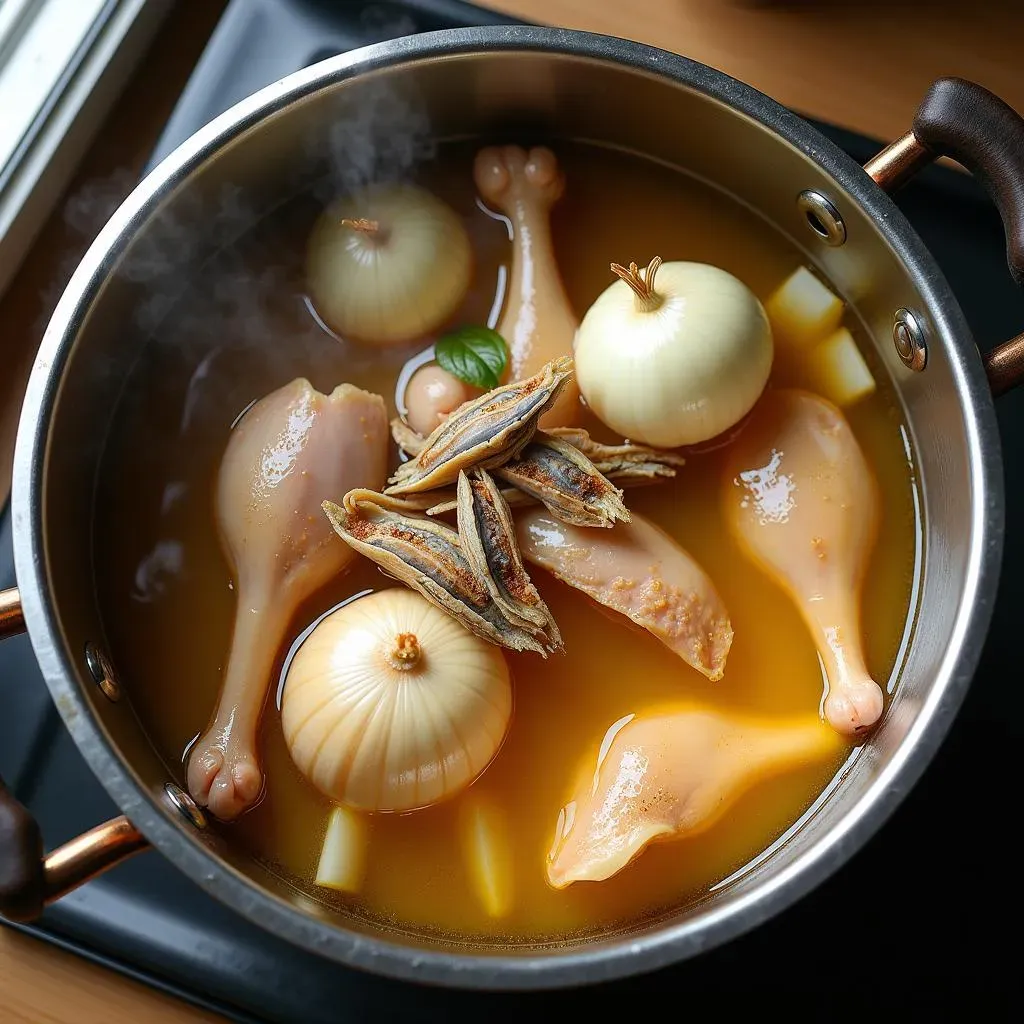
Crafting the Perfect Korean Chicken Noodle Soup Broth
The Foundation of Flavor: Choosing Your Chicken
The broth is the soul of Dak Kalguksu, so choosing the right chicken is crucial. While you can use a whole chicken, I highly recommend using economical chicken backs (frames) as the base for your broth. They're packed with flavor and collagen, which will create a rich and silky texture. For the meat component, chicken drumsticks are an excellent choice. They remain tender and juicy during the long simmering process and are easy to shred for serving.
Don't be afraid to experiment with different chicken parts to find your perfect combination. Some people prefer using chicken thighs for their richer flavor, while others opt for chicken breasts for a leaner option. Just remember that the bones are key to a flavorful broth!
Building Depth: Aromatics and Secret Ingredients
Beyond the chicken, aromatics are essential for infusing your broth with complexity. Start with the basics: onion, green onion, garlic, and ginger. These ingredients provide a foundational layer of savory goodness. For a deeper, more nuanced flavor, I like to add dried anchovies. Trust me on this one – they add a subtle umami note that elevates the broth to another level. A sprinkle of black peppercorns adds a touch of warmth and spice.
Now, for my secret ingredient: little neck clams! These little gems add a briny sweetness that perfectly complements the chicken and anchovies. They also release their own flavorful liquid, further enriching the broth. If you can't find little neck clams, you can substitute them with other types of clams or even skip them altogether, but I highly recommend giving them a try if you can.
Ingredient | Purpose |
|---|---|
Chicken Backs | Rich flavor, collagen for silky texture |
Chicken Drumsticks | Tender and juicy meat |
Onion, Garlic, Ginger | Savory base |
Dried Anchovies | Umami depth |
Little Neck Clams | Briny sweetness |
KnifeCut Noodles and Variations for Your Chicken Noodle Soup
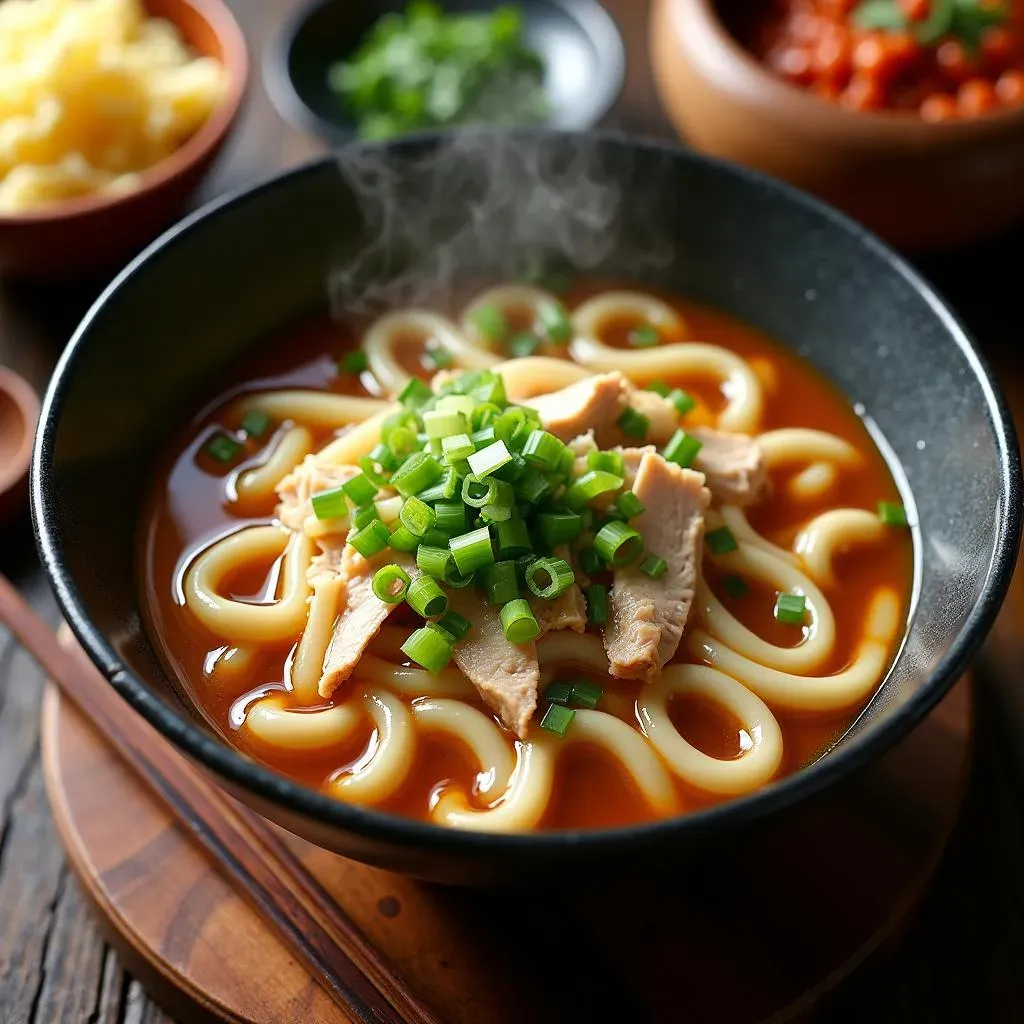
KnifeCut Noodles and Variations for Your Chicken Noodle Soup
The Star of the Show: Kalguksu Noodles
Kalguksu noodles are what truly set this soup apart. These aren't your average spaghetti noodles; they're thick, flat, and slightly chewy, with a delightful bite that complements the savory broth and tender chicken. Traditionally, they're made by hand, rolled out, and then sliced with a knife into rustic, uneven strands – hence the name "knife-cut noodles." The slight irregularity in shape and thickness adds to their unique texture and charm. If you're feeling ambitious, you can certainly try making your own Kalguksu noodles from scratch. But don't worry, store-bought options work just fine, too!
When buying Kalguksu noodles, look for ones that are specifically labeled as such. They're usually found in the refrigerated section of Korean or Asian grocery stores. If you can't find them, don't fret! There are several substitutes that can work in a pinch.
Noodle Alternatives: When You Can't Find Kalguksu
While authentic Kalguksu noodles are ideal, sometimes you have to work with what you've got. Here are a few substitutes that can capture a similar vibe:
- Udon Noodles: These thick, round wheat noodles are a readily available option. They have a similar chewy texture to Kalguksu noodles and hold up well in the broth.
- Sujebi: These hand-torn noodles are another Korean specialty. They're slightly thinner and more irregular in shape than Kalguksu noodles, but they offer a similar rustic appeal.
- Fettuccine: In a pinch, you can even use fettuccine pasta. While it's not a perfect match, its flat shape and wheat-based composition make it a decent substitute.
No matter which noodles you choose, be sure to cook them according to the package directions. I recommend rinsing them briefly before adding them to the boiling broth to remove any excess starch. This will prevent the soup from becoming too thick and cloudy.
Serving and Seasoning Your Homemade Korean Chicken Noodle Soup
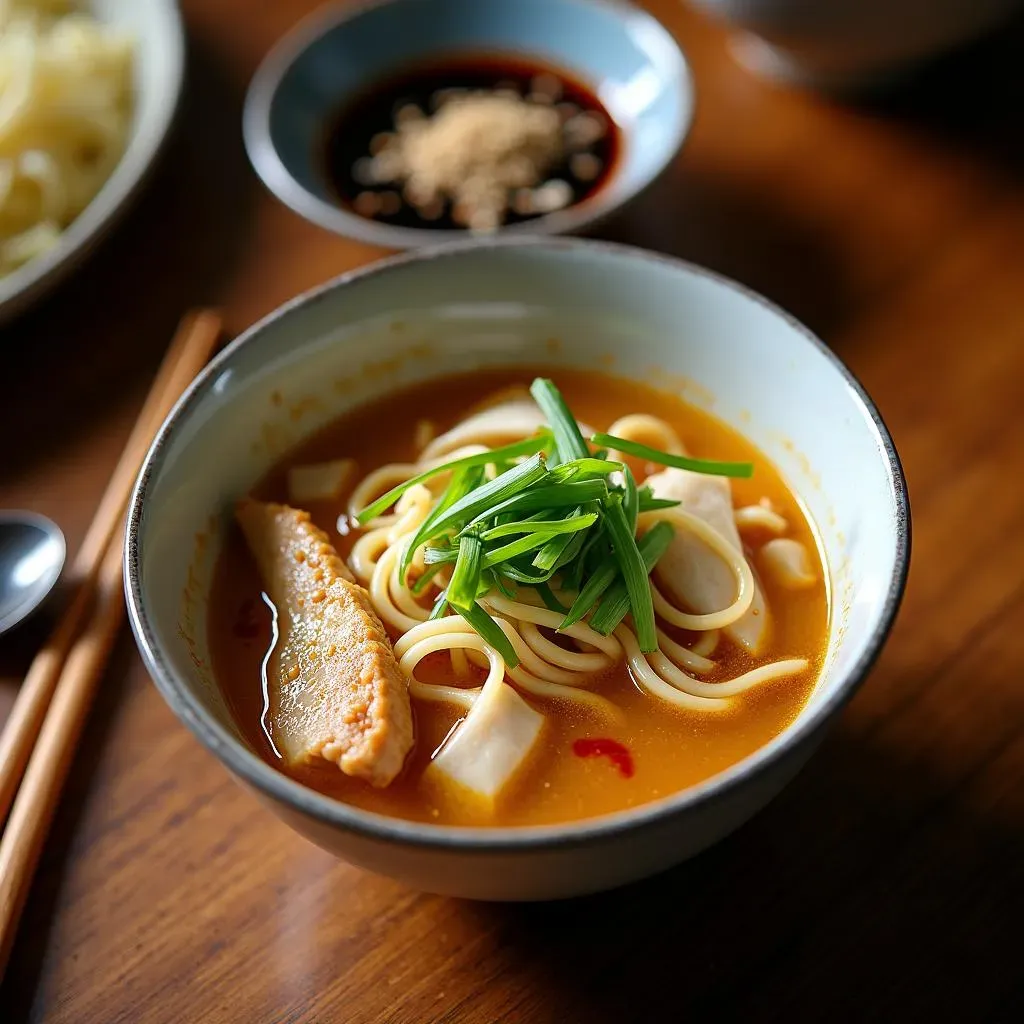
Serving and Seasoning Your Homemade Korean Chicken Noodle Soup
The Art of Presentation
Alright, you've got this amazing Dak Kalguksu bubbling away, the aroma filling your kitchen. Now it's time to plate it up and make it look as good as it tastes! Ladle the hot soup into bowls, making sure each serving gets a generous portion of noodles, chicken, and those precious clams (if you used them). Garnish with a sprinkle of freshly chopped green onions for a pop of color and a hint of freshness. A drizzle of sesame oil can also add a subtle nutty aroma and sheen.
Presentation is key, even for a humble soup like this. It’s about creating an experience. Think about how you want your diners to feel when they see that bowl of Dak Kalguksu in front of them. Warm? Comforted? Excited? Let that guide your plating.
Spice It Up: Optional Seasoning Sauces
While Dak Kalguksu is delicious on its own, a little extra seasoning can take it to the next level. A classic Korean condiment that pairs perfectly with this soup is a spicy soy-based sauce. This sauce typically consists of soy sauce, gochugaru (Korean chili powder), minced garlic, sesame oil, and a touch of sugar or honey. Mix these ingredients together to your liking, adjusting the amount of gochugaru to control the heat level. A small dollop of this sauce added to the soup just before serving provides a welcome kick and enhances the overall flavor profile.
Some people also enjoy adding a spoonful of kimchi or a sprinkle of toasted sesame seeds for extra texture and flavor. Feel free to experiment and find your own perfect combination of seasonings. The goal is to complement the existing flavors of the soup, not overpower them.
A Bowl of Warmth: Mastering the Korean Chicken Noodle Soup Recipe
From simmering the perfect broth to mastering the art of knife-cut noodles, crafting Dak Kalguksu is a rewarding culinary journey. This Korean chicken noodle soup recipe offers a comforting and flavorful experience that transcends the ordinary. Whether you stick to the traditional methods or experiment with our unique broth enhancements and seasoning suggestions, you're sure to create a dish that warms both body and soul. So, gather your ingredients, sharpen your knife (or grab your favorite noodles), and get ready to enjoy a taste of Korea in every spoonful.
